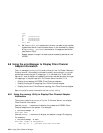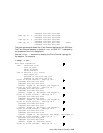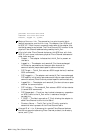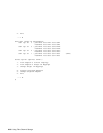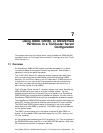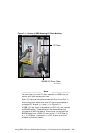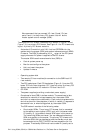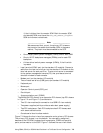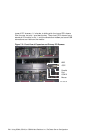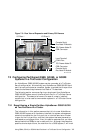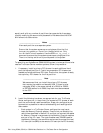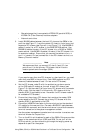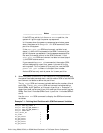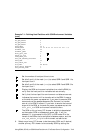
We recommend that you connect I/O riser 0 (local I/O riser
ports 0 and 1) to the primary PCI drawer that will be the
master system control manager (SCM).
The BA54A-AA PCI drawer (the bottom PCI drawer in Figure 7–2 and
Figure 7–3) is a primary PCI drawer. See Figure 2–1 for PCI drawer slot
layout. A primary PCI drawer contains:
– A standard I/O module in slot 0-0/1 that has EEPROMs for the
system control manager (SCM) and system reference manual (SRM)
firmware. The SCM is powered by the V
aux
output of the PCI power
supply whenever AC power is applied to the PCI drawer.
The master SCM uses the console serial bus (CSB) to:
Control system power-up
Monitor and configure the system
Halt and reset the system
Update firmware
– Operating system disk
– Two remote I/O riser modules (for connection to the QBB local I/O
riser module)
– Two PCI backplanes: Each PCI backplane (Figure 2–1) has two PCI
buses. PCI bus 0 has three slots. PCI 1 has four slots. A primary PCI
drawer has a standard I/O module in PCI bus 0 slot 0-0/1.
– CD-ROM
– Two power supplies (providing a redundant power supply)
– Console serial bus (CSB) interface module: The console serial bus
consists of a network of microprocessors that the master SCM
controls in a master/slave relationship. Each node is programmed to
control and monitor the subsystem in which it resides, in response to
commands from, or when being polled, by the master SCM.
The CSB network consists of the following nodes:
One to eight SCMs. The primary PCI drawer that is connected
to the operator control panel (OCP), and, with the lowest node
ID (usually 0), is the default master SCM upon initial power-up.
The remaining SCMs are slaves. You can designate one slave
SCM as a standby to the master. The primary PCI drawer with
the slave SCM that you designate to be the standby must also
be connected to the OCP. The OCP has two connectors for this
purpose. The standby SCM must have a node ID (usually set to
7–4 Using GS80, GS160, or GS320 Hard Partitions in a TruCluster Server Configuration



